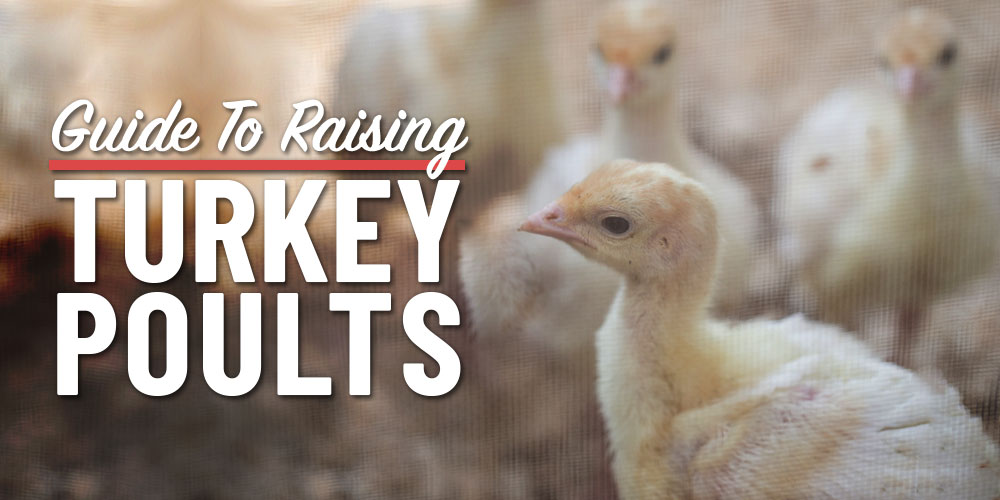
NAVIGATION
Whether you’re just getting started raising turkey poults or are looking for some guidelines to help your current flock thrive, these basic turkey tips will help your poults grow into healthy adults.In my experience, learning how to take care of turkey poults (baby turkeys) is similar to raising baby chickens, so if you’ve owned chickens for any length of time, you’re off to a great start, but, either way, I’ll walk you through the basics.
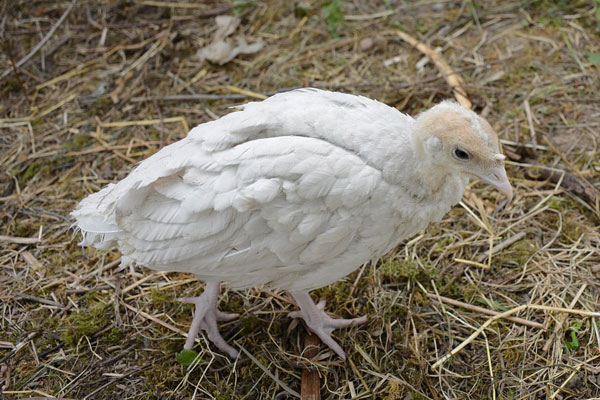

Hi, I’m Ryan
Buying free-range, organic turkey meat is expensive, so learning how to take care of turkey poults has reduced my meat budget while also being a fairly simple and enjoyable experience. I highly recommend following these simple steps to raise a healthy turkey flock of your own.

Why You Might Consider Raising Turkey Poults, AKA Turkey Chicks

You might consider taking care of turkey poults and raising them into grass-fed, healthy adult turkeys for numerous reasons. A poult is simply a baby turkey, and these funny little creatures can grow into a lean protein that’s great for tasty holiday meals, winter soups, and summer sandwiches.
Reasons To Raise Turkey Poults
- They are gentle, intelligent birds.
- They provide delicious organic meat.
- They are cleaner birds than chickens.
- Their eggs make a healthy, occasional treat (though you’ll probably want to save most for hatching new birds).
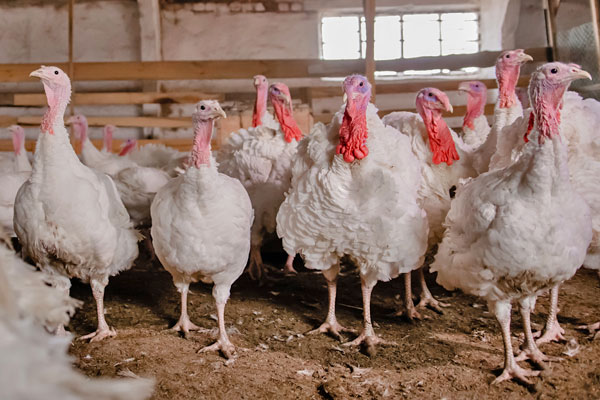
Raising Turkey Poults Or Turkey Chicks

They’re also much more vulnerable to respiratory diseases and cold temperatures than baby chickens are, so you’ll need to keep them nice and warm for the first 10-12 weeks. With proper planning and preparation, you’ll be ready in no time to bring some turkey poults home.
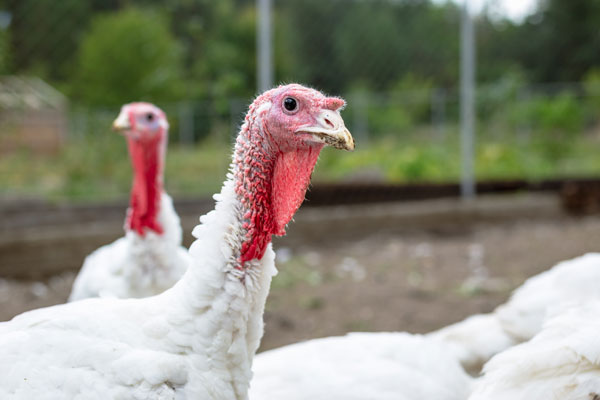
To ensure the best health for your turkey flock, don’t raise your turkey chicks together with baby chickens, as this can increase their exposure to poultry diseases.
Setting Up Your Turkey Brooder
A turkey brooder, which is exactly like a brooder for baby chickens, is necessary to keep your turkey hatchlings contained, dry, clean, and warm. You can buy a prebuilt metal or wood brooder or a packaged kit to assemble at home, or you can construct one yourself from scrap materials around your homestead. I like to put my turkey brooder on top of a table or crate in a warm, dry room to keep it away from drafts so my poults don’t get chilled.
You’ll want to have your brooder set up with clean bedding and some food and water in advance. You’ll also need a heating lamp to regulate your turkey brooder temperature between 95 and 98 degrees Fahrenheit.
What Brooder Size Is Best For Turkey Hatchlings?
The size of your brooder will depend on how many turkey hatchlings you want to raise. On my homestead, I like to raise a handful of turkey poults at a time, enough to supply us with turkey meat occasionally throughout the year. For three to five turkey chicks, I constructed a 3×8 scrap wood box and crafted a cover out of metal caging. For the first few weeks of their life, I make it smaller by sliding a wooden divider into place to keep them warm and cozy in a 3×4 section of the brooder. Once they hit week four, I pull out the divider to give them access to the full brooder space.
Selecting The Right Brooder Bedding
These shavings (particularly if you use pine wood shavings) are soft and absorbent, which helps keep the brooder cozy and dry for your baby turkeys.
At about three to four weeks, when I remove the divider in my brooder, I like to switch my brooder bedding to sand, as the poults are old enough to walk in the sand at this point, and it’s much easier to clean and slightly cheaper to buy. The sand stays dry, as I can scoop out their messes as if it were cat litter.
Water For Turkey Poults
Keeping a fresh water supply available in the brooder is essential for caring for baby turkeys. This is trickier than it sounds since poults have a tendency to fall into their water dishes or even dump them all over their bedding.
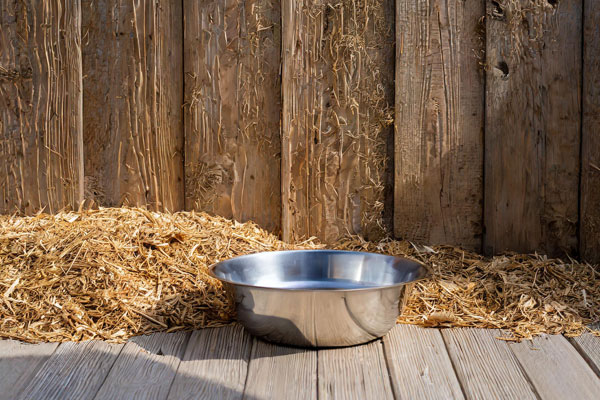 I prefer a hanging water dish that is easy for the poults to reach but elevated off the ground to keep it clean from wood chips and turkey poop. Also, a hanging water dish is safer for the poults, as they’re much less likely to fall in and drown or get chilled and sick from getting wet.
I prefer a hanging water dish that is easy for the poults to reach but elevated off the ground to keep it clean from wood chips and turkey poop. Also, a hanging water dish is safer for the poults, as they’re much less likely to fall in and drown or get chilled and sick from getting wet.
Another consideration with your brooder’s water is placement. Keep the dish close enough to the heat lamp so the little birds don’t get chilled (especially during the first few weeks), but also far enough away so they don’t get overheated. I like to hang the water dishes in the middle of the brooder.
Feeding Turkey Poults
One of the main considerations in taking care of turkey poults is feeding them correctly. What do baby turkeys eat? They can be fed any poultry starter feed that’s high in protein. To grow to the right size and health, turkeys under 12 weeks need a feed that’s at least 28% protein, and even after 12 weeks, you shouldn’t feed them any feed with less than 20% protein. This is a higher percentage than baby chickens need, but keep in mind that turkeys grow much larger than chickens and require more protein than baby chicks.
Heating Turkey Poults
For their first six weeks of life, your baby turkeys will need a heat lamp over their brooder to keep them nice and toasty. These little birds can easily catch a chill and die, so heating is paramount for raising turkey poults.
TIP: Keep poults in their brooder in a warm, dry, non-drafty area.
To prepare before you even bring your baby birds home, start the heat lamp and use a thermometer to get the turkey brooder temperature to a steady 95 to 98 degrees Fahrenheit. Once you get your poults in the brooder, you can tell if the temperature is too high if they huddle as far away from the heat lamp as possible.
Similarly, your brooder temperature is too low if they all cozy up to the heat lamp to stay warm. As they grow and their feathers come in, you can experiment with lowering the temperature a few degrees weekly to prepare them for life outside of the brooder, but watch the turkey hatchlings to make sure they’re comfortable.
Preventing Problems For Your Turkey Poults
At the end of the day, learning how to care for baby turkeys is really a process of protecting them from themselves. These little birds are fragile for the first few weeks, and many won’t realize their need to eat and drink or will let the other poults scare them away from the food and water dishes.
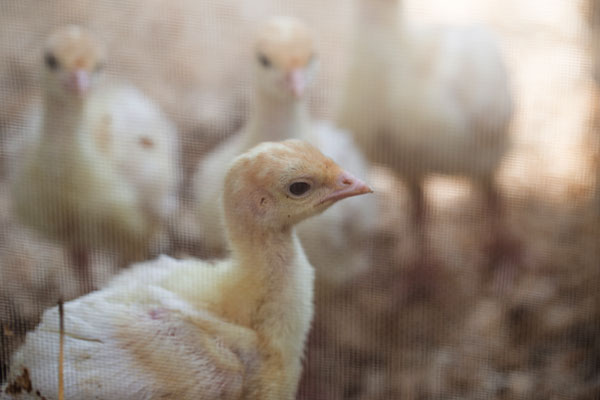 Dehydration is one of the biggest killers of poults, simply because they don’t intuitively know to find water when they’re thirsty.
Dehydration is one of the biggest killers of poults, simply because they don’t intuitively know to find water when they’re thirsty.
They’ll need to be taught where the food and water dishes are. You can do this by dipping their little beaks into the food and water dishes when you first put them in the brooder.
Keep a close eye on them throughout these first weeks to make sure they all get into the habit of eating and drinking regularly.
Don’t put birds of different ages in the same brooder or coop. Younger birds are more susceptible to the diseases older birds can carry, and they’re also likely to be bullied by the older birds.
Since turkey poults are also prone to respiratory diseases and are easily chilled, you’ll need to frequently clean their bedding at least once per week, ensure they’re not getting into the water dish, and check on the brooder’s temperature. The attention and TLC you need to give in these first weeks does require a lot of time, but if you want healthy adult turkeys, it’s worth the extra effort in the beginning stage.
FAQ About Raising Turkey Poults

Turkey poults aren’t one of the first livestock options most homesteaders choose, so they’re a lot of fun for me to talk about, and I like to answer questions about how to raise baby turkeys. Let’s look at some of the most frequent questions that come my way.
How Long Does It Take To Raise A Baby Turkey?
It takes about eight weeks to raise a baby turkey indoors before they are ready for outside life. They’ll spend the first few weeks in their heated brooder before you’ll gradually start to lower the temperature and maybe even bring their brooder onto your porch sometimes to acclimate them to outdoor weather little by little.
Between six and eight weeks is when I usually move my poults outside, depending on when their feathers finish coming in. The turkeys will mature between 14 and 22 weeks of age (depending on the breed), though heritage breeds take between 25 and 30 weeks to mature.
How Soon Can Baby Turkeys Go Outside?
Baby turkeys can go outside once all of their feathers have come in. This usually occurs between six and eight weeks of age, so it’s not advisable to put them in an outdoor coop before then.
What Temperature Can Baby Turkeys Tolerate?
The ideal turkey brooder temperature is between 95 and 98 degrees Fahrenheit, since turkey poults are easily chilled and can die if the temperature gets too low. I usually try reducing the temperature by 5 degrees every week as they mature and start to grow feathers so the change in temperature won’t be too shocking when I move them outside.
Can Baby Turkeys Eat Chick Starter?
Baby turkeys can eat chick starter if you can’t find a high-protein poultry starter, but chick starter won’t have enough protein to be their only source of food. You can supplement their protein by adding 2 cups of brewer’s yeast to every 10 pounds of your chick starter.
When Should I Switch My Turkey From Starter To Grower?
You can switch your turkeys from starter feed to grower feed once they reach a weight of 15 pounds. Until then, their diet should consist completely of a poultry starter that’s at least 28% protein.
How Long Do Baby Turkeys Need A Heat Lamp?
Baby turkeys need a heat lamp to keep the turkey brooder temperature consistent until all of their feathers come in between six and eight weeks of age. Reducing the heat by 5 degrees each week until you hit 70 degrees is a great way to prepare the chicks for the outside world.
Learning how to take care of turkey poults is a little more complicated than raising chickens, but it also has a lot of similarities and is still pretty straightforward. Now that you know all of the basics for raising turkey poults of your own, it’s time to get started raising your own baby turkeys on your homestead!
Your Turn!
- How many turkey poults have you raised at once?
- How did raising chickens help prepare you for raising turkey chicks?












Leave a Reply